Midweek Review
‘The’: Its standing in the English language

by K. A. I. KALYANARATNE
Senior Manager, Publications
Postgraduate Institute of Management
University of Sri Jayewardenepura
Vice President, Hela Havula
Taken as a common entity ‘language’, both in its spoken and written form, is the most ingenious instrument the human fraternity has invented thus far. The relevance of this statement becomes pretty obvious if we ponder on how we would be sans the language(s), the main communication-instrument we use to express our thoughts and ideas as well as passing of information. Fortunately, therefore, languages have saved us from being reduced to a ‘dumb’ community.
The second basic feature I wish to bring about is that every language is unique as each contains a set of guidelines and usages based on the sentiments, thinking patterns and acceptances of each community. Having adopted and made use of them for long periods, they have now been accepted as providing the structure for each language. Structure brings about order and clarity to what you say and write (more importantly in writing). This framework could be described as a set of tools and traditions than a set of rules. They, in fact, bring order and discipline to a language. Any looseness of language will result in a gap being created between the speaker/writer and the listener/reader.
What are ‘articles’ in English
In English almost every word is classified into its kind, and these kinds of words are referred to as “parts of speech”, which are eight in number. One of these kinds are the adjectives whose function is to qualify nouns. In grammar article is any one of the three words a, an and the. Nevertheless, many a book of English grammar treats these articles separately mainly due to the vital role they play to determine the level of recognition of the particular noun with which it is linked. A simple example is that ‘an elephant’ or ‘a man’ would differ in emphasis from ‘the elephant’ or ‘the man’. In this context these articles are also referred to as determiners. A and an are termed as indefinite article because they describe nouns in general, while ‘the’ restricts the meaning of a noun to make it more specific.
The Presence/Absence of the Definite Article ‘The’ in Other Languages
Against the backdrop of English, having only one definite article ‘the’, in Spanish one needs to choose from among four definite article, namely, el, la, los and las. Further, in Spanish all nouns, including inanimate things, belong either to masculine or feminine gender. There is no neuter gender. As the nouns of the two genders are further divided into singular and plural one needs to choose both the gender and the number (i.e., singular or plural) in applying the appropriate article out of these four articles.
In the French language definite articles (referred to as articles définis) are le in the masculine singular, la in the feminine singular, l’ for singular nouns that start with a vowel, and les in the plural nouns belonging to both genders. Similar to Spanish there are four different definite articles in German, depending on the gender and number of the noun.
However, language like Sinhala, Tamil and Russian do not have definite or indefinite articles. In these languages definiteness of the noun is denoted by the use of a ‘determiner’ like this, that, those, or these. Or else specialty is indicated by the way an incident is narrated/described.
For example, Cumaratunga Munidasa while narrating the “The Elephantine Disaster” (Ali Uvadura) in the Kiyavana Nuvana, 6th reader, thus describes the background to the said disaster.
“Ma yannata sitha siti kumbura mage sithin aeth viya. Kola atta katata muth
sithata novanneya.”
When rendered into English it would read as “the paddy field I intended to approach got distanced from my mind. The twig of leaves went into my mouth and not to my mind.” Herein, the roles of ‘the’ are performed by the clarity and vividness of the writer’s narration.
‘THE’ is the Commonest Word in English
Now that ‘the’ has been used for long years in English as a determinant to specify nouns, it is as an indispensable component in its phraseology. We will, therefore, explore the specifics of the subject proper, that is, the use, misuse and non-use of THE in the English language. Many a person errs in its use due either to ignorance, negligence and/or carelessness, little knowing that THE is a determinant that can twist, turn and confuse what is being conveyed. Professor of Modern English Language at the University of Birmingham, and who pioneered work in corpus linguistics, discourse analysis, lexicography, and language teaching, says that “the English word ‘the’ is by far the commonest word in English”. It has been found that out of the total number of words in any English write-up at least 7 per cent will have the article ‘The’. More often, the number exceeds the 7 per cent limit.
Most Words are Communicated by Their Co-textual Items
Prof. John Sinclair further sounds another important note on the behaviour of words in sentences when he states that “While it is often thought that words convey meaning, there are many words whose distinct senses are actually communicated by their co-textual items. Since nearby lexical items have a significant semantic influence on each other, units of meaning are not determined by single words, but instead by phrases (Sinclair, 2008; Stubbs, 2009). Herein the definite article THE stands tall as it concretizes the specificity of the meaning a sentence wishes to convey.
Further, apart from THE being one of the important grammatical words of the English language, on its own it does not have any absolute/real meaning. But it strongly sends signals about other words. The words it sends signals about are always nouns. In that sense English is considered more as a materialistic language. The word the is used to help us talk about things (nouns), rather than events. The is used as a signal meaning that the speaker/writer wants the listener/reader to understand whether the thing being spoken of is shared (old) information, or new information, worthy of note. What is said above could be exemplified by these two sentences:
The boy was walking down the main street of the town.
A boy was walking down a main street of a town.
THE
– An Instance of Deviating from being Specific to General
The general understanding is that while A and AN, referred to as indefinite articles, describe nouns in general, THE restricts the meaning of a noun to make it more specific or definite, thus treating it as the definite article. However, little is known of instances where when speaking of very general terms THE can be used instead of A or An to make a noun less specific. This is one such instances;
“There was a tiger in my garden. The tiger is a ferocious animal.” Although ‘The tiger’ has been used, it doesn’t refer to a particular animal.
A further function of THE is to articulate expressions and make the language more fascinating. Few examples are:
The more the merrier;
The more the better;
The more you have the more you want;
A further function of these expressions is to make the saying concise, and make it idiomatic. Preciseness and economy of word-usage are two other virtue of these expressions.
Revelations of a Study of the Use of the Definite Article ‘THE’
Professor Dr. Siromi Fernando, former head of the Department of English, University of Colombo, has made the following revelations of a study undertaken on the use of the definite article ‘the’ in academic essays of twenty-one undergraduates following English as a subject, i.e., persons of a relatively high level of English proficiency. 14 per cent of the undergraduates in the study had no problems with the use of ‘the’ in academic writing. They had good proficiency in Sri Lankan English. The other 86 per cent made 283 errors, although these were much smaller in proportion to instances of correct use, both of definite and indefinite articles. The English of the other 86 per cent ranged from good proficiency, to moderate or lesser levels of good proficiency. The errors found were of two main types, the omission of the definite article, and the incorrect addition of the definite article. The omission is, by far, the more recurrent, totaling about 51 per cent of all errors. However a considerable proportion of errors in incorrect addition, about 22 per cent was also found. It was further found that about 50 per cent of errors were limited to five of the undergraduates, although the other 50 per cent was distributed among the other13 who made errors. The study demonstrated that ignorance of rules pertaining to the use of ‘the’ and lack of correction of written work, or correction without explanation of reasons for errors, contributed to problems regarding the use of ‘the’ in this study.
The Omission and Misuse of THE
Such being the versatility of THE in the English language it is sad that a majority of our present-day writers do not pay due attention to this word in their compositions. I consider this lapse as a blind-spot, in the sense that they seem to be oblivious to its value and importance.
Revelations made in the study referred to above is a clear indication that up to the level of the university no concerted effort had been made, especially by teachers, to rectify language deficiencies of their students.
Over and above teaching and teaching methodologies, many newspapers and periodicals are also responsible for the deterioration of the status of language. J. E. Metcalfe in his ‘The Right Way to Improve Your ENGLISH’ (Elliot publications, 1958) says in the item on ‘Articles’ that
I shall conclude my notes on articles by drawing attention to a vulgar practice of the less responsible newspapers and periodicals. This is the inexcusable omission of the definite article the at the beginning of a sentence, clause or phrase, and I pray you not to be misled by this custom into thinking it is good English.”
If anyone has not gathered the nuances and fineness of a language a sure way to improve is to indulge in wide and wise reading, and not blind and superficial reading. Ignoring a tool of a language proved as indispensable, for clarity of meaning, is nothing short of sheer ignorance.
“We die. That may be the meaning of life.
But we do language.
That may be the measure of our lives.”
Tony Morrison,
American Novelist and Nobel & Pulitzer Prize Winner (1931-2019)
Midweek Review
Raid on ‘Millennium City’ DMI safe-house:
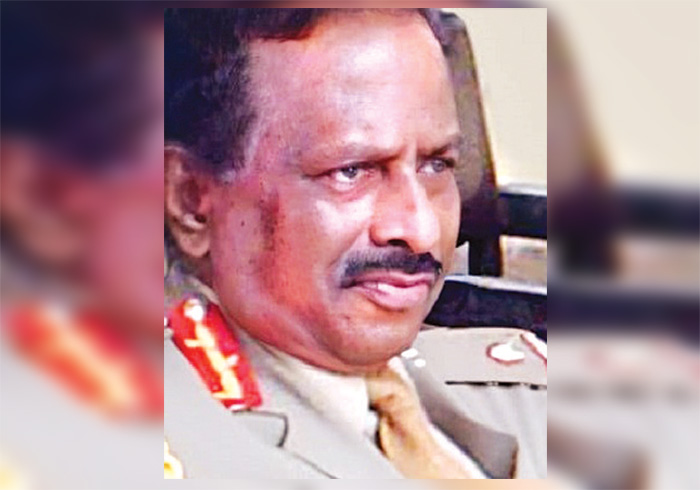
A forgotten story (part 1)
Colombo High Court Judge Adithya Patabendi, on March 27, 2025, acquitted former ASP Kulasiri Udugampola, who had been indicted over the Kandy police raid on a safe house run by the Directorate of Military Intelligence (DMI) at the Millennium City housing complex, Athurugiriya. The raid, conducted in the first week of January 2002, sent shock waves through the defence establishment. Delivering the judgment, 23 years after the raid, Patabendi declared that the prosecution failed to prove the charges beyond a reasonable doubt.
The Dec. 5, 2001 parliamentary election was conducted at the height of the war in the North. Having gained the upper hand in the battlefield, the LTTE was working on a Ceasefire Agreement with Norway. The country was in turmoil with President Chandrika Bandaranaike Kumaratunga, who survived an LTTE suicide blast at the final rally of her Dec. 1999 presidential election campaign, struggling to overcome a sustained UNP offensive.
In the run-up to the Dec. 5, 2001 parliamentary polls, UNP leader, Ranil Wickremesinghe accused the Directorate of Military Intelligence (DMI) of planning to assassinate him. The UNPer claimed that the DMI was training Tamil terrorists at the Panaluwa Army Testing Range to mount an attack on his campaign bus, as well as his political rallies.
The unprecedented accusation placed the war-weary Army in an extremely embarrassing position when it was actually turning tables on the enemy using its own tactics in areas considered by then as being off limits for security forces. The UNP, with no shame, brazenly exploited the made-up threat as the main Opposition party and its allies, including a treacherous section of the media, stepped-up pressure on the Army to no end.
On the instructions of Wickremesinghe, UNP Chairman Charitha Ratwatte and Deputy Chairman Daya Palpola wrote a hard-hitting letter to Army Commander, Lt. Gen. Lionel Balagalle warning that he would be held responsible ‘in the event of an unfortunate incident’. The UNP duo accused the Army chief of training personnel to engage in a destabilisation campaign against the UNP.
An irate Army Commander, Lt. Gen. Balagalle in reply addressed a letter to Ratwatte and Palpola dismissing their accusations. The Island, in a front-page exclusive headlined ‘Army chief says no truth in UNP claims,’ in its Nov, 11, 2001 edition that revealed the exchange between Army headquarters and Sirikotha.
The report was based on what Lt. Gen. Balagalle had told this writer the previous evening. The Army chief, himself a one-time head of the Directorate of Military Intelligence (DMI), said that there was absolutely no basis for the UNP allegation that a hit squad was undergoing training in the use of high explosives and thermobaric weapons to attack Wickremesinghe.
The UNP ignored the Army chief’s letter. The allegation was repeated throughout the campaign. The raid on the DMI safe-house should be examined against the backdrop of the exchange between the Army commander and Sirikotha.
It was somewhat reminiscent of the JVP tactic to tarnish all others who had ruled the country since independence as being A Grade crooks to come to power with a record majority they couldn’t have even dreamt of knowing their sordid past. The trick was to repeat a lie long enough with the help of Western funded international and local NGO quislings and the gullible masses believed it.
Amidst a furore over the UNP allegation that the Army conspired to assassinate Wickremesinghe, Army operatives blew up a truck behind enemy lines killing five LTTE cadres on Dec. 11, 2001. Then again, they destroyed an LTTE bunker, at the entrance to a base used by Karuna, in the Kokkadicholai area, on Dec. 21, 2001.
Although the Army had conducted a successful small group operation in the Batticaloa District, targeting a key LTTE operative identified as David, way back in 1992, there was no attempt on the part of the military to develop the capability further. But some officers had been keen to promote small group operations to weaken the LTTE and beat it at its own game.
Commenting on the elimination of David, a veteran in clandestine operations told the writer of the deep penetrations ops: “Three personnel took part in the targeted killing of David. They returned to base after achieving the given task. Such operations caused chaos in enemy territory which gave us the psychological advantage over them. We knew of the importance as well as the need to strike within the enemy-controlled areas, though a special strategy on clandestine operations was adopted only in 2001, almost a decade after the hit on David.”
Speaking on condition of anonymity, the soft-spoken official explained the circumstances under which the Army launched deep penetration units soon after one-time Director of the DMI Lionel Balagalle had been appointed Commander of the Army.
Balagalle couldn’t resist the temptation to explore the possibility of infiltrating areas outside government controlled regions to launch attacks. “It was a tremendous task. Those who volunteered to join the operation realised the risks they were taking. They were among the best and they courageously adopted the new doctrine, which enabled us to carry out targeted killings. It was nothing but a high risk operation, though it produced results. They had to curtail their movements, particularly in the Eastern Province, where we used Batticaloa as the centre of our operations.”
Then Brigadier Kapila Hendarawithana executed the operation in his capacity as Director of DMI.
The LTTE realised the danger. Within months after the launch of the first DMI raid in the Batticaloa District, the LTTE pushed for the suspension of the DMI operation. The February 23, 2002 Ceasefire Agreement (CFA), arranged by the Norwegians, included a clause which specifically dealt with DMI action. The CFA called for the suspension of operations behind LTTE lines. While the LTTE had been successful in its negotiations with the Norwegians and the then inept UNP government with Executive President Chandrika Kumaratunga reduced to more or less a figurehead, the DMI suffered a debilitating setback when that regime with hardly any feelings for our valiant fighting men risking their lives day and night, ordered a police raid on an Army safe-house used by a deep penetration team at Athurugiriya.
The UNP-led United National Front (UNF) emerged victorious at the Dec. 5, 2001 general election with 109 seats, while the defeated PA managed to secure 77 seats. The remaining seats were shared by the JVP (16), the TNA (15), the SLMC (5), the EPDP (2) and the DPLF (01).
Balgalle on ops behind enemy lines
It had been one of the bloodiest elections with the five-week campaign claiming the lives of almost 50 people, with the polls day massacre of a group of SLMC supporters at Udathalawinna being the single worst incident. This massacre carried out by troops attached to the Vijayaba Infantry Regiment (VIR) who had been brought to Kandy at the behest of de facto Defence Minister Anuruddha Ratwatte was used as an excuse by a vindictive UNP leadership to order the raid on the safe house used by the DMI situated at Millennium City, Athurugiriya, on Jan. 2, 2002, which changed the course of the conflict. The UNF cited intelligence reports that Anuruddha Ratwatte’s sons, wanted in connection with the Udathalawinna massacre, were taking refuge at Athurugiriya.
Had the UNP leadership been a little cautious, it would never have publicly accused the Army of an assassination plot. Lt. Gen. Balagalle discussed the issues at hand with the writer. Operating hit squads behind enemy lines had been a key element in the Army’s strategy to give it a taste of its own medicine, the Army chief said at that time, alleging the then Opposition had failed to grasp what was going on. The Island quoted Lt. Gen. Balagalle as having said: “Had they quietly raised the issue with us and sought a clarification without playing politics with national security, the Athurugiriya fiasco could have been averted. Even ex-LTTE cadres were brought in for operations along with valuable input from civilian informants. We were successful due to many reasons such as training from Pakistani instructors. We also accommodated troops from other fighting battalions to engage in operations behind enemy lines, though the Special Forces and Army Commandos spearheaded the campaign.”
At the time troops had been undergoing training in Pakistan, Balagalle functioned as Security Forces Commander, Jaffna.
The Athurugiriya raid ruptured relations between the UNP and the Army. It caused irreparable damage to national security. At the behest of the UNP, a section of the media, including the Colombo-based correspondents working for international news agencies, highlighted the Athurugiriya raid speculating the Army’s alleged involvement in anti-government activities. Investigating officers alleged that those who had been based at Athurugiriya were involved in the alleged attempt to assassinate Wickremesinghe. Subsequently, the DMI was accused of planning attacks in the city and its suburbs to sabotage the Norwegian-led peace process.
The UNP allegations had the desired impact in the wake of state television showing recovered items, which included 66 sets of LTTE uniforms, four thermobaric weapons, seven claymore mines each weighing 10 kgs, 10 claymore mines, each weighing one kg each, three T-56 assault rifles along with 400 rounds of ammunition, 10 anti-tank weapons, detonators, cyanide capsules, exploders, remote controlled devices and wire rolls.
While a section of the media lashed out at the Army, in a front-page exclusive headlined ‘Controversy over police raid on army officers Millennium City residence,’ on Jan 4, 2002, The Island revealed that a police team from Kandy, led by die-hard UNP loyalist, Kulasiri Udugampola, had raided an Army safe house. The raid also involved a team of CCMP (Ceylon Corps of Military Police).
In spite of both Lt. Gen. Balagalle and the then Director of DMI, Brigadier Kapila Hendawitharana (later served as Chief of National Intelligence, before quitting in 2015) reassuring the government of the legitimacy of operations undertaken by the DMI, the police was let loose on covert operatives. Regardless of Balagalle rushing Hendarawithana, who later figured in many controversies to the scene, Udugampola went ahead with the raid. The police had obtained permission from courts to search the premises.
Udugampola had the backing of the then Interior Minister, John Amaratunga. IGP Lucky Kodituwakku, though being convinced of the legitimacy of the DMI operation, couldn’t do anything. He was helpless.
Army takes firm stand
The Kandy police raided the safe house shortly after the officer-in-charge of the DMI operation had handed over part of their arsenal. Those involved in the hit-and-run operations in LTTE held-areas had returned to Colombo on Dec. 27, 2001, in the wake of the Wickremesinghe administration declaring its readiness to go ahead with a Norwegian initiative to sign a one-sided CFA clearly favourable to the LTTE. The Kandy police also accused the Army of planting two claymore mines targeting a UNP candidate along the Wattegama-Panwila road, in the run-up to the Dec. 5, 2001 polls.
The then security forces spokesman, Brig. Sanath Karunaratne emphasised that those who operated from Athurugiriya were involved in ‘Army duties’ (The Island Jan. 4, 2002). Regardless of protests by the Army, those arrested were taken away to the Narahenpita CMP headquarters before being transferred to Kandy. They were treated like criminals and held under humiliating conditions. Six of them, including an officer, were held in one room. For two weeks, the media reported all sorts of conspiracy theories.
Let me stress that the Athurugiriya betrayal, in a way divided the Army. An influential section of the Army obviously cooperated with the conspirators.
Those who had been arrested were held for almost two weeks before being granted bail. The police raid would never have been possible without an influential section within the Army cooperating with the political establishment to undermine a vital operation, which brought the LTTE under immense pressure.
The UNP and the police justified Udugampola’s raid. Asked whether he had used the safe house to accommodate his sons, one-time Defence chief, Anuruddha Ratwatte, candidly acknowledged that he hadn’t been among those who knew of the existence of that particular rear base, though the Army kept him informed of operations undertaken by the DMI. (Feb. 1 issue of The Island, 2002)
Marapana to the rescue
Then Defence Minister, Tilak Marapana, a one-time Attorney General, to his credit did not play politics with such an important issue and thwarted an attempt by the Kandy police to prolong the detention of DMI operatives using the provisions of the PTA to please their then political masters in the UNP. The bid to neutralize the DMI was made ahead of the signing of the CFA. The Wickremesinghe administration didn’t even bother to consult the armed forces and police top brass regarding the provisions of the agreement. Then Navy Commander, Vice Admiral Daya Sandagiri told the Lessons Learnt and Reconciliation Commission (LLRC) how then Defence Secretary, Austin Fernando, had bypassed them with regard to sensitive military issues.
Fernando, in an article captioned ‘The Peace Process and Security Issues’ (Negotiating Peace in Sri Lanka: Efforts, Failures and Lessons) admitted that the refusal on the part of the then government to consult the military had been a failure. Fernando said (page 42): “The military chiefs weren’t consulted in the drafting of the CFA. Of course, a casual opportunity was given to them to discuss the draft with Ministers of Defence (Tilak Marapana) and Constitutional Affairs (Prof. G.L. Peiris). This wasn’t considered adequate by them as they didn’t get an opportunity to discuss the CFA with their senior officers”.
The CFA declared that ACTIVITIES BY DEEP PENETRATION UNITS should be ceased along with the cessation of all military action. The LTTE wouldn’t have demanded a ban on DMI operations unless the group acknowledged the growing threat posed by DMI. The LTTE had been vulnerable to those hunting them in their own backyard. Obviously, the LTTE wouldn’t have bothered about the DMI had the latter been stalking Wickremesinghe in the run-up to the Dec. 2001 polls.
Retired Senior DIG Merril Gunaratne, who had been Defence Advisor to Wickremesinghe during the CFA, exposed the UNP leadership in his ‘COP IN THE CROSSFIRE.’ The first book of its kind, written by one-time Director General of Intelligence, revealed how the top UNP leadership took security issues lightly at the expense of the country as well as the party. Asked whether he had been involved in the operation to move the Kandy police against the DMI, Gunaratne told the writer at that time he categorically opposed the move. “I was convinced the PA government wouldn’t target Wickremesinghe, thereby allowing the UNP to benefit from the sympathy vote. Unfortunately, Wickremesinghe and his top advisors felt the Army was hell bent on destroying the UNP.”
Ex-LTTE’s among the slain
The Athurugiriya raid had a catastrophic impact on the armed forces, which experienced untold hardships due to miscalculations on the part of political and military leaders. Following the betrayal of the DMI, the LTTE unleashed a series of operations in the city, its suburbs and in the Eastern Province. Altogether, over 50 military personnel, Tamil informants as well as ex-LTTE cadres working for the Army, died at the hands of the LTTE as their identities were revealed owing to the raid on the army safe house. Wijayanadan Widyatharan, alias Vidya, of Sea Road, Navakkudah, was the first operative killed by the LTTE after exposure of the Athurugiriya operation. Vaidya was abducted on January 20, 2002, over two weeks after the raid.
The dead included two senior military officers, both killed in Colombo. Although the two military officials, holding the rank of Major and Colonel could have been on a hit list, regardless of the Athurugiriya fiasco, the LTTE exploited the situation to demoralise the Army. Daring operations directed at the DMI and police intelligence helped boost the LTTE’s image. The military was placed in an unenviable position as the suspension of the PTA effectively neutralised counter-measures directed at LTTE hit squads.
Inspector Dale Gunaratne, the then President of the Police Inspectors’ Association, was perhaps the only law enforcement officer publicly critical of the UNP’s response to the LTTE threat. (Having retired years ago, Gunaratne now serves as an Attorney-at-Law) Although his superiors reacted angrily, Gunaratne lashed out at the government for allowing the LTTE to exploit the CFA to its advantage. Citing the killing of Inspector Thabrew at the Dehiwela Police Station, in July 2003, IP Gunaratne alleged that the suspension of the PTA in keeping with the CFA was nothing but a grievous threat to those fighting terrorism. He kept on lambasting the UNP and his own superiors for not taking action to neutralise the LTTE threat. But the UNP was determined to salvage the crumbling peace process at any cost. For those at the helm of the government, the lives of security forces and police didn’t matter, as long as they believed the LTTE would remain in the negotiating process. Politicians felt whatever the provocations, the peace process should continue.
By Shamindra Ferdinando
Midweek Review
Universal in a Catastrophe

Survivors of the South-East Asian tragedy,
Triggered by nature’s stern promptings,
Somehow reining-in suffocating sorrow,
Are leaving no unhinged stone unturned,
To salvage the remains of those held dear,
In fresh testimony of love’s staying power,
But it speaks well for the untouched majority,
That unstinted succor is pouring in,
To render some solace to the hapless,
Although no amount of fellow feeling,
Could make up for the wrenching sorrow,
Of parting from a priceless presence.
By Lynn Ockersz
Midweek Review
Batalanda and complexities of paramilitary operations
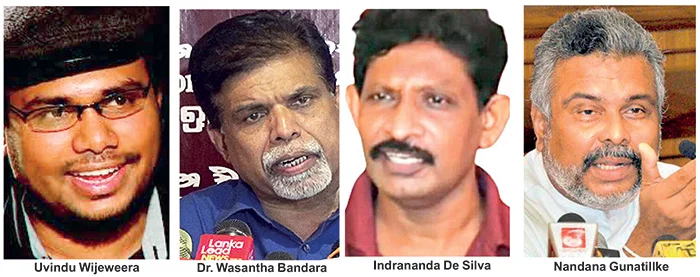
Former President Ranil Wickremesinghe’s recent combative ‘Head-to-Head’ interview with British-American Mehdi Hasan on Al Jazeera has opened a can of worms. As to why Hasan raised the Batalanda Presidential Commission report, during a 49-minute interview conducted at the London’s Conway Hall, with a clearly pro LTTE audience, remains a mystery. This must be yet another notorious way to show how even-handed they are as in the case of its coverage of Russia, China, Palestine or Ukraine for their gullible viewers.
Recorded in February and aired in March 2025, the interview is definitely the most controversial the UNP leader, who is also an Attorney-at-Law, ever faced during his political career; always used to getting kid glove treatment, especially after taking over the party in 1994.
The continuing public discourse on Batalanda should provoke a wider discussion on Sri Lanka’s response to separatist Tamil terrorism, since the cold blooded murder of Jaffna SLFP Mayor Alfred Duriappah, which signalled the beginning of the LTTE terror campaign that ended in May 2009 with the crushing military defeat of the Tigers on the banks of the Nathikadal lagoon, as well as two southern insurgencies in 1971 and 1987-1990.
As Nandana Gunatilleke (one time JVP General Secretary and ex-MP), Dr. Wasantha Bandara (ex-JVPer and close associate of the slain JVP leader Rohana Wijeweera), Indrananda de Silva (ex-JVPer, incumbent Central Committee member of Frontline Socialist Party [FSP] and ex-military photographer) and Uvindu Wijeweera (Rohana Wijeweera’s son and leader of Dewana Parapura) agreed during the recent Hiru ‘Balaya’ discussion, conducted by Madushan de Silva, the Batalanda operation was in line with the overall counter-terrorist/insurgency strategy of the then government.
The issues at hand cannot be discussed at all without taking into consideration the JVP terrorism that, at one-time, almost overwhelmed the UNP’s unbroken rule, since 1977, carried out while openly brushing aside most of the universally accepted genuine parliamentary norms. The country’s second Republican constitution, promulgated by the UNP regime with a 5/6 majority in Parliament, in 1978, had been amended no less than 13 times by the time they were finally ousted in 1995. This was mainly to facilitate their continuous rule. Unfortunately, all stakeholders have sought to take advantage of Batalanda, thereby preventing a proper dialogue. Quite surprisingly, none of the guests, nor the interviewer, bothered, at least, to make a reference to the JVP bid on President J.R. Jayewardene’s life in Parliament on the morning of July 18, 1987. At the time, JVPer Ajith Kumara, working in the House as a minor employee, hurled two hand grenades towards JRJ, with the then Prime Minister Ranasinghe Premadasa seated next to JRJ. While one government MP lost his life, several others suffered injuries, including then National Security Minister Lalith Athulathmudali, whose spleen had to be removed.
At one point, Gunatilleke declared that they assassinated UNP MP for Tangalle Jinadasa Weerasinghe on July 3, 1987, in response to the government killing well over 100 people, in Colombo, protesting against the signing of the Indo-Lanka accord on July 29, 1987. The parliamentarian was killed near the Barawakumbuka-Welangahawela bridge on the Colombo-Rathnapura-Embilipitiya Road. The UNPer was killed on his way home after having declined Premier Premadasa’s offer to make an SLAF chopper available for him to reach home safely.
Against the backdrop of MP Weerasinghe’s assassination and the grenade attack on the UNP parliamentary group that claimed the life of Keethi Abeywickrema (MP for Deniyaya), the government had no option but to respond likewise. The operation, established at the Batalanda Housing scheme of the State Fertiliser Corporation, constituted part of the counter-insurgency strategy pursued by the UNP.
Those who called Batalanda complex Batalanda torture camp/ wadakagaraya conveniently forgot during the second JVP inspired insurgency, the military had to utilize many public buildings, including schools, as makeshift accommodation for troops. Of course the UNP established Batalanda under different circumstances with the then Industries Minister Ranil Wickremesinghe providing political authority. Batalanda had been an exclusive police operation though the Army had access to it whenever a requirement arose.
Those who had been suddenly withdrawn from the Northern and Eastern Provinces, to meet the rapidly evolving security threat in the South, required accommodation. FSP CC member Indrananada de Silva had received unhindered access to Batalanda in his capacity as a military photographer and the rest is history.
As to why Indrananda de Silva switched his allegiance to the FSP should be examined, taking into consideration his previous role as a trusted military photographer, formerly a Lance Corporal of the Military Police. An influential section of the JVP, led by Kumar Gunaratnam, formed the FSP in April 2012 though it didn’t receive the much anticipated public support. Both Indrananda de Silva and Nandana Gunatilleke, who aligned himself with the UNP, found fault with the JVP-led National People’s Power (NPP) over its handling of the Batalanada issue.
Paramilitary operations
Paramilitary operations had been an integral part of the overall counter-insurgency campaign, directed at the JVP responsible for approximately 6,600 killings. Among those death squads were PRRA primarily drawn from the SLMP (Sri Lanka Mahajana Party) and SRRA (the socialist Revolutionary Red Army). PRRA had close links with the Independent Student Union (ISU) whose leader Daya Pathirana was slain by the JVP. The vast majority of people do not remember that Daya Pathirana, who led the ISU during the turbulent 1985-1986 period, was killed mid-Dec. 1989. The second insurgency hadn’t started at that time though the JVP propagated the lie that they took up arms against the UNP government following the signing of the Indo-Lanka peace accord on July 29, 1987.
In addition to PRRA and SRRA, the government made use of paramilitary groups, namely Kalu balallu, Ukkusso, Rajaliyo, Kaha balallu, Kola koti, Rathu Makaru, Mapila, Gonussa, Nee, Keshara Sinhayo, Le-mappillu and Kalu koti.
The UNP also involved some elements of Indian trained Tamil groups (not of the LTTE) in paramilitary operations. Such operations, that had been backed by respective Cabinet Ministers, were supervised by local law enforcement authorities. Paramilitary operations had been in line with psychological warfare that was meant to cause fear among the JVP, as well as the general population. Military operations that had been combined with paramilitary actions received the blessings of the political leadership at the highest level. In the case of Batalanda (1988-1990) President J.R. Jayewardene and Ranasinghe Premadasa knew of its existence.
Even after the eradication of the top JVP leadership, by Nov. 1989, police, military and paramilitary operations continued unabated. Former JVPers appearing on ‘Balaya’ agreed that counter-insurgency operations were actually brought to an end only after D.B. Wijetunga succeeded President Ranasinghe Premadasa after the latter’s assassination on May Day 1993.
After the LTTE resumed war in June 1990, just a couple of months after the withdrawal of the Indian Army (July 1987-March1990), the UNP authorized paramilitary operations in the northern and eastern areas. Members of TELO, PLOTE, EPRLF as well as EPDP were made part of the overall government security strategy. They operated in large groups. Some paramilitary units were deployed in the Jaffna islands as well. And these groups were represented in Parliament. They enjoyed privileged status not only in the northern and eastern regions but Colombo as well. The government allowed them to carry weapons in the city and its suburbs.
These groups operated armed units in Colombo. The writer had the opportunity to visit EPDP and PLOTE safe houses in Colombo and its suburbs soon after they reached an understanding with President Ranasinghe Premadasa. Overnight at the behest of President Premadasa, the Election Department granted these Tamil groups political recognition. In other words, armed groups were made political parties. The Premadasa government accepted their right to carry weapons while being represented in Parliament.
It would be pertinent to mention that thousands of Tamil paramilitary personnel served the government during that period. There had been many confrontations between them and the LTTE over the years and the latter sought to eliminate key paramilitary personnel. Let me remind you of the circumstances, the EPRLF’s number 02 Thambirajah Subathiran alias Robert was sniped to death in June 2003. Robert was engaged in routine morning exercises on the top floor of the two-storeyed EPRLF office, on the hospital road, Jaffna, when an LTTE sniper took him out from the nearby Vembadi Girls’ high school. The operation of the Norway managed Ceasefire Agreement (CFA) made no difference as the LTTE removed Robert who led the party here in the absence of leader Varatharaja Perumal, the first and the only Chief Minister of the North-Eastern Province.
In terms of the CFA that had been signed by Premier Ranil Wickremesinghe and LTTE leader Velupillai Prabhakaran, in Feb. 2002, the government agreed to disarm all paramilitary personnel. Many wouldn’t remember now that during Premadasa’s honeymoon with the LTTE, the Army facilitated the LTTE onslaught on paramilitary groups in selected areas.
Muthaliff’s role
During the ‘Balaya’ discussion, the contentious issue of who shot JVP leader Rohana Wijeweera came up. Nandana Gunatilleke, who contested the 1999 Dec. presidential election. as the JVP candidate, pointing to an article carried in the party organ that dealt with Wijeweera’s assassination said that he wrongly named Gaffoor as one of the persons who shot their leader whereas the actual shooter was Muthaliff. The headline named Thoradeniya and Gaffoor as the perpetrators.
Declaring that he personally wrote that article on the basis of information provided by Indrananda de Silva, Gunatilleke named Asoka Thoradeniya and Tuan Nizam Muthaliff of the Army as the perpetrators of the crime. Thoradeniya served as Sri Lanka’s High Commissioner in the Maldives during the Yahapalana administration, while Muthaliff was killed by the LTTE in Colombo in late May 2005. The shooting took place at Polhengoda junction, Narahenpita. Muthaliff was on his way from Manning town, Narahenpita, to the Kotelawala Defence University.
The programme was told that the JVP had over the years developed close relationship with Thoradeniya while Indrananda de Silva accused Dr. Wasantha Bandara of duplicity regarding Muthaliff. How could you recognize Muthaliff, slain by the LTTE, as a war hero as he was actually one of the persons who shot Rohana Wijeweera, the latter asked.
At the time of his assassination, Muthaliff served as the Commanding Officer, 1 st Regiment Sri Lanka Military Intelligence Corps. The then parliamentarian Wimal Weerawansa was among those who paid last respects to Maj. Muthaliff.
At the time of Rohana Wijeweera’s arrest, Muthaliff served as Lieutenant while Thoradeniya was a Major. Indrananda de Silva strongly stressed that atrocities perpetrated by the police and military in the South or in the northern and eastern regions must be dealt with regardless of whom they were conducting operations against. The former JVPer recalled the Army massacre in the east in retaliation for the landmine blast that claimed the lives of Northern Commander Maj. Gen. Denzil Kobbekaduwa and a group of senior officers, including Brigadier Wijaya Wimalaratne, in early Aug. 1990 in Kayts.
Dr. Wasantha Bandara warned of the Western powers taking advantage of what he called false narrative to push for a Truth and Reconciliation Commission.
It would be pertinent to mention that the LTTE also used the underworld as well as some corrupt Army personnel in planning high profile assassinations. Investigations into the assassination of Muthaliff, as well as Maj. Gen. Parami Kulatunga, killed in a suicide attack at Pannipitiya, in June 2006, revealed the direct involvement of military personnel with the LTTE.
Indrananda de Silva disclosed that soon after Anura Kumara Dissanayake won the presidential election last September, the FSP, in writing, requested the JVP leader to inquire into killings during that period, including that of Rohana Wijeweera. The FSPer alleged that President Dissanayake refrained from even acknowledging their letter. Indrananda de Silva emphasized that Al Jazeera never disclosed anything new as regards Batalanda as he exposed the truth years ago. The former JVPer ridiculed the ruling party tabling the Batalanda Commission report in the wake of Wickremesinghe’s Al Jazeera interview whereas the matter was in the public domain for quite some time.
Indrananda de Silva and Nandana Gunatilleke exchanged words over the latter’s declaration that the JVP, too, was subjected to investigation for violence unleashed during the 1987-1990 period. While the FSPer repeatedly declared that those who carried out directives issued by the party were arrested and in some cases killed, Nandana Gunatilleke took up the position that the party should be held accountable for crimes perpetrated during that period.
The interviewer posed Nandana Gunatilleke the question whether he was betraying his former comrades after joining the UNP. Nandana Gunatilleke shot back that he joined the UNP in 2015 whereas the JVP joined UNP as far back as 2009 to promote retired Army Chef Sarath Fonseka’s presidential ambition even though he wiped out the JVP presence in Trincomalee region during the second insurgency.
JVP’s accountability
Nandana Gunatilleke is adamant that the party should accept responsibility for the killings carried out at that time. The former JVPer declared that Vijaya Kumaratunga (Feb. 16, 1988), first Vice Chancellor of the Colombo University (March 08, 1989) Dr. Stanley Wijesundera, Ven. Kotikawatte Saddhatissa thera (Aug. 03, 1988) and Chairperson of the State Pharmaceutical Corporation Gladys Jayewardene (Sept. 12, 1989) were among those assassinated by the JVP. SPC Chairperson was killed for importing medicine from India, the former Marxist aligned with the UNP said, while actor-turned-politician Kumaratunga’s assassination was attributed to his dealings with President J.R. Jayewardene.
According to Nandana Gunatilleke, except for a few killings such as General Secretaries of the UNP Harsha Abeywickrema (Dec 23, 1987) and Nandalal Fernando (May 20, 1988), the vast majority of others were ordinary people like grama sevakas killed on mere accusation of being informants. The deaths were ordered on the basis of hearsay, Nandana Gunatilleke said, much to the embarrassment of others who represented the interest of the JVP at that time.
One quite extraordinary moment during the ‘Balaya’ programme was when Nandana Gunatilleke revealed their (JVP’s) direct contact with the Indian High Commission at a time the JVP publicly took an extremely anti-Indian stance. In fact, the JVP propagated a strong anti-Indian line during the insurgency. Turning towards Dr. Wasantha Bandara, Gunatilleke disclosed that both of them had been part of the dialogue with the Indian High Commission.
It reminds me of the late Somawansa Amarasinghe’s first public address delivered at a JVP rally in late Nov. 2001 after returning home from 12 years of self-imposed exile. Of the top JVP leadership, Somawansa Amarasinghe, who had been married to a close relative of powerful UNP Minister Sirisena Cooray, was the only one to survive combined police/military/paramilitary operations.
Amarasinghe didn’t mince his words when he declared at a Kalutara rally that his life was saved by Indian Premier V.P. Singh. Soft spoken Amarasinghe profusely thanked India for saving his life. Unfortunately, those who discuss issues at hand conveniently forget crucial information in the public domain. Such lapses can be both deliberate and due to negligence.
By Shamindra Ferdinando
-

 News5 days ago
News5 days agoBid to include genocide allegation against Sri Lanka in Canada’s school curriculum thwarted
-
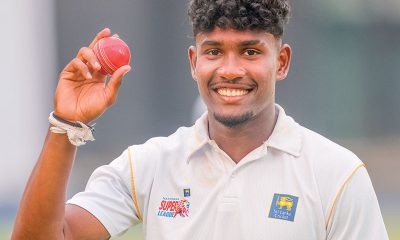
 Sports6 days ago
Sports6 days agoSri Lanka’s eternal search for the elusive all-rounder
-
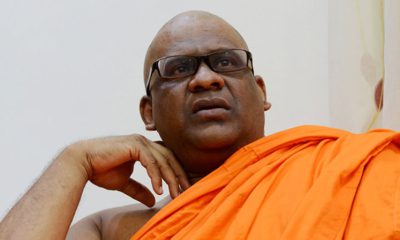
 News7 days ago
News7 days agoGnanasara Thera urged to reveal masterminds behind Easter Sunday terror attacks
-
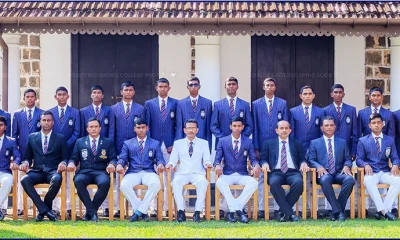
 Sports2 days ago
Sports2 days agoTo play or not to play is Richmond’s decision
-

 News6 days ago
News6 days agoComBank crowned Global Finance Best SME Bank in Sri Lanka for 3rd successive year
-

 Features6 days ago
Features6 days agoSanctions by The Unpunished
-
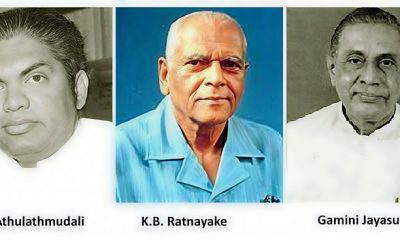
 Features6 days ago
Features6 days agoMore parliamentary giants I was privileged to know
-
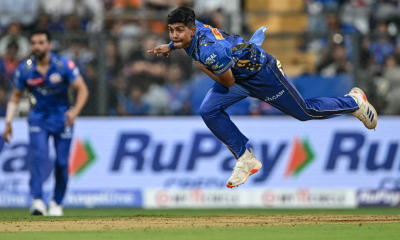
 Latest News4 days ago
Latest News4 days agoIPL 2025: Rookies Ashwani and Rickelton lead Mumbai Indians to first win











